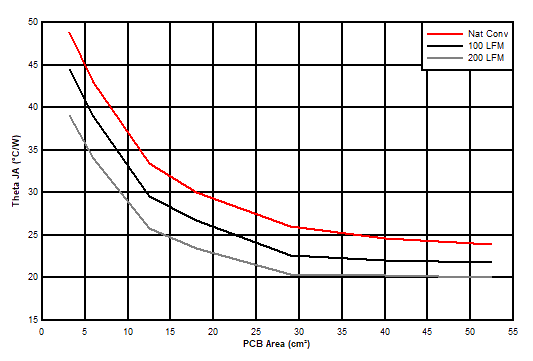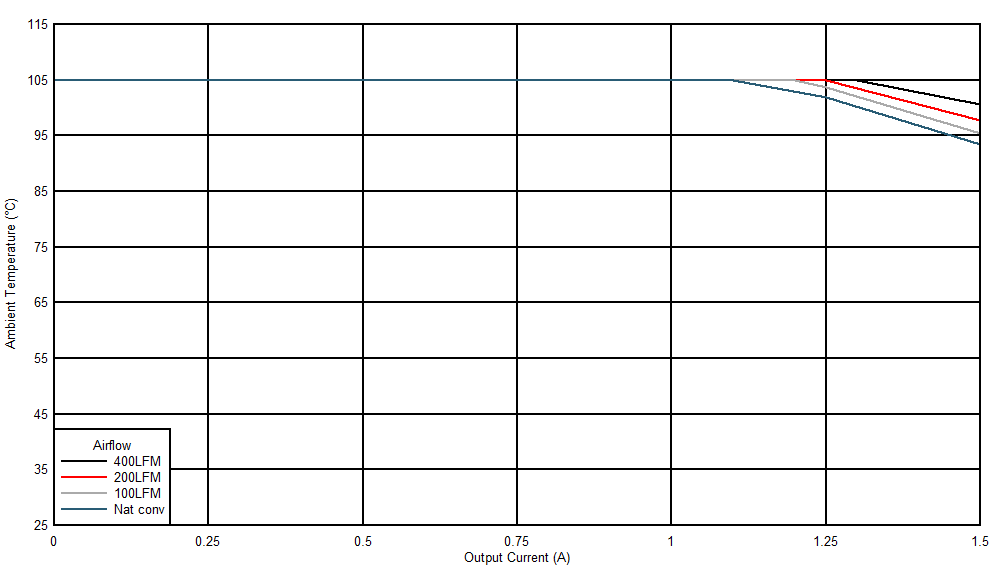SNVAA10 January 2021 LMR36015S , TPS54350-EP , TPS54354-EP , TPS543820E , TPS54622-EP , TPS62110-EP , TPS62111-EP , TPS62112-EP , TPS629210E , TPSM5D1806E
3.3 Power Modules
Power modules aim to simplify power supply design by integrating the power converter IC along with an inductor(s), a capacitor(s) and other passive components into a single package. The modules come in different type of packages depending on their voltage ratings, current ratings, and target applications.
For solutions using power modules, thermal characterization is greatly simplified since all relevant power dissipation components are integrated into the module package. TI’s power modules are already thermally characterized to be reliable in many designs. The detailed characterization is provided in the data sheet, highlighting thermal capabilities at different power conditions, potential de-rated performance at higher output power conditions and ambient temperatures. The power module solution can greatly simplify the thermal design process and achieve faster time to market.
For example, the TPSM5601R5HE is 4.2-V to 60-V input, 1-V to 16-V output, 1.5-A power module in a Enhanced HotRod™ QFN package. Figure 3-5 and Figure 3-6 demonstrate a typtical thermal performance curve for the device.
 Figure 3-5 θJA vs PCB Area
Figure 3-5 θJA vs PCB Area
| Device soldered to a 63.5 mm × 82.5 mm, 4-layer PCB |